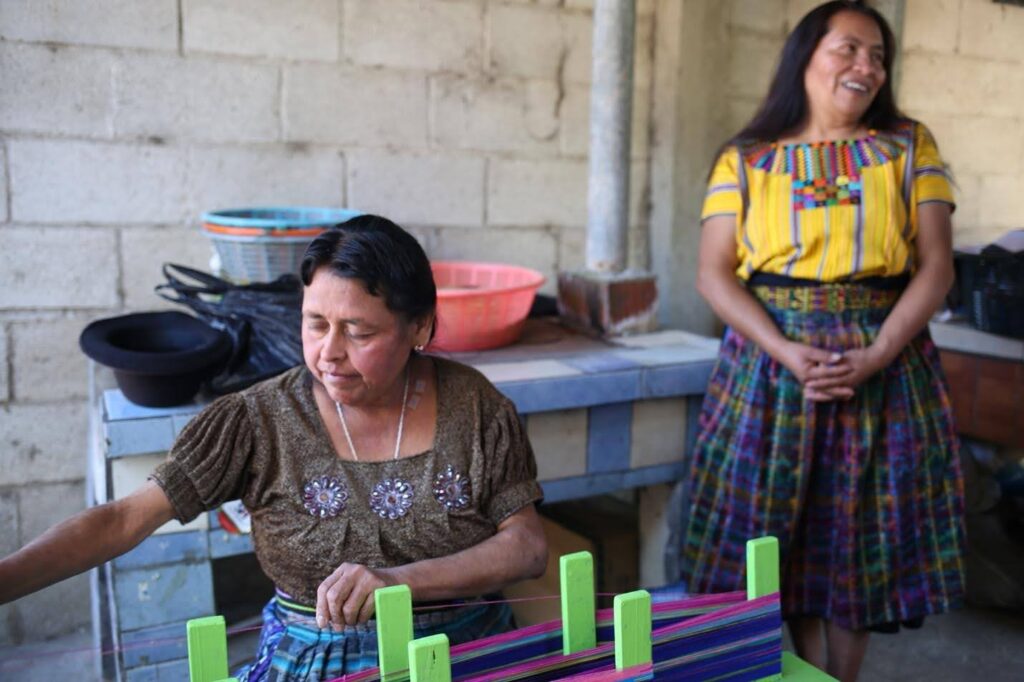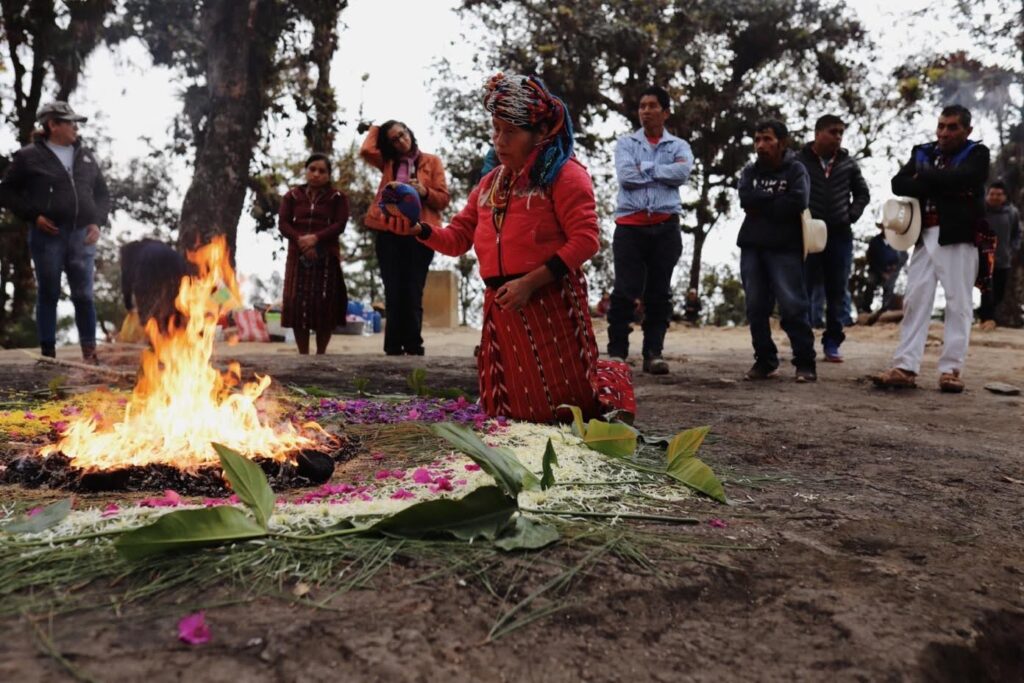May 14, 2025
Democracy Dialogues: Maya Textile Weaver PhotoBlog Entry
January 2025 San Juan La Laguna, Guatemala What does it mean to be in dialogue with a textile or piece of clothing? In the West, many might think of this as absurd — giving little thought to where their clothing comes from, let alone the cultural legacy laced between its threads. However, this is not the case amongst these Mayan artists/weavers. As they worked together throughout this dialogue, they spoke of the dialogues they were actively engaged in a dimension invisible to the Western mind. To continue to make as their ancestors once did, in the face and against the (fast fashion) pace of westernization and colonization, is an act of resistance that ties this community together intergenerationally. The relationships they maintain with their clothing are an empowering preservation of the wisdom and culture that was once passed down to them. A conversation woven through time, color, material, and form has maintained the metaphysical dialogue that has been ongoing for millennia between the ancestors and those still here. Many of these women joined this dialogue when they were just children — like the ten-year-old girl and sixteen-year-old boy seen in these videos. However, fewer and fewer young people are learning this communitarian practice as the effects of colonization spread, not only due to waning interest, but also the lack of fair pay within the tourist market. Collectively, completing such intricate designs can take up to three months. Yet within our dialogue, these artist workers revealed that the price they can sell their work for is often symbolic — as it is by no means a true reflection of the time, effort, care, and wisdom that is woven into each piece. How might we empower these weavers on the fringe to continue to dialogically darn (mend) the fabric of their community through their craft as they have for innumerable generations? And what might a people-powered practice provide them that capitalism cannot? — Zach Herring
Democracy Dialogues: Maya Textile Weaver PhotoBlog Entry Read More »
Democracy Dialogues: Chichicastenango PhotoBlog Entry
Guatemala, 2025 The Dialogues of Knowledge The early dawn illuminated the empty market hallways in Chichicastenango, Guatemala. This town is one of the strongest bastions of Maya science, where the fervor for Maya spirituality has weathered colonialism, remaining visible in the essence of streets and plazas. The smell of copal incense dominates the air. Today, there is no market. It is Tuesday, a weekly day designated for cleaning. Everyone participates in the cleansing of the market. A water truck leads the way, and the market is cleaned collectively and meticulously coordinated among dozens of vendors, families, and community members wielding brooms. The scene is ordinary and subtle, yet it becomes clear that something different is happening here; communal life thrives in the town. This is a powerful glimpse into the resilience of Maya collective identity and cultural resistance, especially considering colonialism has spent centuries destroying community relations to impose capitalistic modes of living instead. Guatemala is no stranger to colonial terror and anti-democratic practices. The country has endured decades of American interventionism associated with a series of brutal military dictatorships, culminating in a devastating war of resistance that led to a genocide against the Maya population. In late 2023, mass mobilizations of Maya communities brought the country to a halt, taking over highways and vital infrastructure to compel the government to honor the democratic election of left-wing candidate Bernardo Arevalo. According to Dr. B’eleje Kan, who leads our research team and participated in the resistance, the Maya dialectic method was central in organizing the fight for democracy in those days. Also referred to as the Dialogues of Knowledge, these are formal dialogue circles with simple yet specific protocols designed to establish a genuine and replicable communication format. Dr. Kan explained that people intuitively gathered in dialogue circles in the streets and neighborhoods to strategize local objectives for the resistance and collectively determine the nation’s fate. In retrospect, the Dialogues draw from the same communal life of the town I observed in Chichicastenango—the harnessing of a humanizing sense of unity and ancestral collectivity that has long disappeared from Western societies. This is the energetic dimension of the Dialogues of Knowledge. The Maya commonly utilize dialogue circles to share experiences, communal healing, exchange perspectives, and organize politically. We aim to document, celebrate, and amplify Maya knowledge respectfully and ethically. Our research team traveled to Guatemala to dialogue with leaders and community members who walk a spiritual path of power: artists, teachers, weavers, lawyers, and activists guiding their life’s vision through the Maya Kosmovision. We are producing an audiovisual dialogue that documents the stories of those dedicated to cultural resistance and political liberation. For instance, we met with hip-hop artists who have mastered the challenge of rapping in their mother tongue, Tz’utujil. We engaged in dialogue with revolutionary teachers from an elementary school that educates children through the lens of the Maya Kosmovision. We also joined a beautiful ceremony atop a sacred mountain, where we spoke with spiritual leaders, social leaders, and community members about their ongoing struggle to protect spiritual sites and secure government support for essential services. We aim to capture wisdom from all these stories in audiovisual format. For the past two years, we have dedicated our work to exploring the Dialogues of Knowledge and the pedagogical and methodological applications of the Maya Kosmovision. Although the Maya Kosmovision belongs to the Maya people, its content is so rich and comprehensive that it can help anyone connect with their humanity and achieve balance and harmony with their surroundings. The Maya call it el arte del buen vivir, or the art of living well. — Javier Mateos Campos
Democracy Dialogues: Chichicastenango PhotoBlog Entry Read More »


